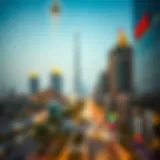Industrial Shielding Impact on Dubai's Real Estate


Intro
The realm of Dubai’s real estate sector is not just a playground for luxurious skyscrapers and architectural wonders; it also represents a rapidly evolving landscape where industrial shielding has taken center stage. As economic growth accelerates, the demand for safe, efficient, and energy-conscious buildings is paramount. This article examines how industrial shielding technology plays a crucial role in ensuring these demands are met, exploring its benefits, challenges, and the future landscape of Dubai’s property market.
With many investors and stakeholders eyeing Dubai for opportunities, understanding industrial shielding becomes vital for making informed decisions. The importance of this topic cannot be overstated, as it directly influences not only property value but also the sustainability and longevity of developments in this vibrant market.
As we journey through this comprehensive guide, we'll delve deeply into various aspects like property trends, emerging neighborhoods, investment opportunities, and expert insights, ensuring that our targeted audience—real estate investors, agents, homeowners, developers, and planners—receives a rich tapestry of information tailored for their unique needs.
Property Trends in Dubai
Dubai's real estate market is a living, breathing entity that shifts and evolves with every economic and social development. Understanding the nuances of these trends is essential for anyone hoping to navigate this competitive landscape.
Emerging Neighborhoods and Hotspots
As industrial shielding technology gains traction, certain neighborhoods in Dubai have emerged as hotspots for both investors and developers. Areas such as Dubai Marina and Jumeirah Lakes Towers are leading the charge, not just because of their scenic views, but also due to their commitment to secure and sustainable building practices. In the aftermath of global events, priorities have shifted, placing a spotlight on neighborhoods that prioritize safety, energy efficiency, and comfort.
Investors might find neighborhoods like Dubai Silicon Oasis particularly appealing, where technological advancements blend seamlessly with modern living. This community actively embraces the integration of industrial shielding, paving the way for a safer lifestyle.
Market Analysis and Future Predictions
Insights from market analysts reveal a promising future for Dubai property, partly due to the integration of industrial shielding. This technology minimizes energy consumption and reduces maintenance costs, appealing to environmentally conscious investors. With the government's push towards sustainability—as evidenced in initiatives spearheaded by the Dubai Land Department—the future of this sector looks positively bright.
Expert predictions suggest a steady uptick in property values, with growth projected to outpace many other global cities.
Investment Opportunities
Navigating through investment opportunities can feel like steering through rough waters, but understanding the role of industrial shielding can provide clarity.
High-ROI Property Types
When looking at high-return-on-investment properties, those equipped with industrial shielding are often at the forefront. Properties that incorporate this technology not only promise lower operational costs but also attract a more quality-focused tenant demographic. Notably, commercial and mixed-use developments show a promising trend of incorporating these advanced features, making them more desirable to investors.
Financing and Mortgage Options
For potential investors, the landscape of financing has also seen changes. Many banks and financial institutions are now recognizing the value of properties with industrial shielding, offering more favorable mortgage options. By aligning with lenders who emphasize sustainability and innovation, investors can find a foothold in this burgeoning market.
Understanding Industrial Shielding
Industrial shielding, particularly within the realm of real estate in Dubai, is a focal point of discussion for investors, agents, homeowners, developers, and planners alike. This term refers to the protective measures and technologies designed to safeguard various structures from physical forces, environmental threats, and even electromagnetic radiation. It's not merely a buzz phrase; it embodies critical strategies employed in property development that can enhance safety and increase the lifespan of structures.
The importance of understanding industrial shielding cannot be overstated. As the Dubai real estate market continues to evolve with soaring demand for commercial and residential properties, adopting robust shielding solutions becomes imperative. Key elements such as increased safety, energy efficiency, and long-term sustainability enable developers to not only meet regulatory requirements but also cater to tenants' growing expectations for modern amenities. Thus, sharpening one's knowledge in this area is vital for anyone looking to navigate the complex landscapes of Dubai’s property sector.
Definition and Scope
When we talk about industrial shielding, we refer to a broad array of materials and techniques used primarily to protect buildings from various threats. The scope includes metallic shields like lead and steel, which are effective against physical impacts and electromagnetic interference, as well as non-metal composite materials, which can provide thermal insulation and fire resistance. Each type serves distinct purposes depending on the nature of the threat, whether it’s radiation, fire, or moisture.
Understanding the definition of industrial shielding also means acknowledging its relevance in today's urban environment. Dubai's rapid growth has led to innovations in building design, necessitating that shielding techniques adapt correspondingly. For example, shielding can be designed into high-rise developments not only to withstand natural elements but also to contribute to the sleek aesthetic that Dubai is known for. This marriage of form and function showcases the potential of industrial shielding as a crucial component in property development.
Historical Background
The history of industrial shielding is as layered as the buildings it protects. It can be traced back to military applications where protecting sensitive equipment from electromagnetic waves was of utmost importance. Over the decades, the focus shifted to commercial and residential applications as building technologies advanced. The 1980s marked a turning point, with increasing awareness about the health impacts of radiation exposure leading to stricter building codes in many countries, including the UAE.
In Dubai, the construction boom led to a unique landscape for shielding practices. Developers began to integrate innovative materials that not only served shielding purposes but also adhered to aesthetic requirements. As we moved into the 21st century, Dubai has embedded industrial shielding into its architectural narratives, reflecting advancements in technology and awareness of environmental factors more than ever. The interplay of these developments paints a comprehensive picture of how far shielding has come and where it is heading within the context of real estate.
Types of Industrial Shielding Materials
Understanding the various types of industrial shielding materials is crucial to grasping their significance in Dubai's real estate market. Different materials offer distinct advantages and are suitable for various applications, depending on specific needs or project requirements. By exploring both metal and non-metal options, investors and developers can make informed decisions that align with their project goals and compliance regulations.
Metal Shielding Options
Metal shielding options are typically renowned for their reliability and effectiveness in various shielding applications. Common metals used include copper, aluminum, and lead, each bringing unique properties to the table.
- Copper is known for its excellent conductivity and durability. It’s often chosen for its resistance to corrosion, making it a popular option in installation areas that may be exposed to moisture or extreme environments.
- Aluminum, on the other hand, is lightweight and offers good strength-to-weight ratio, making it practical for both residential and commercial applications. Its affordability makes it favored among construction project managers aiming for budget-friendly alternatives.
- Lead is largely used in applications demanding high radiation shielding capabilities. While it is effective, the safety and disposal concerns surrounding lead can complicate its usage.
Metal shielding not only enhances protection against electromagnetic interference but also contributes to overall structure durability. In places where Dubai's intense weather conditions pose challenges, metal shielding can serve as a robust barrier, ensuring structural integrity and enhancing safety. However, the choice of metal must also consider cost implications and regulatory factors to ensure a balanced approach in project execution.
Non-Metal Composite Materials
Non-metal composite materials present an innovative alternative for shielding applications. These materials often combine polymers with fillers or additives regarded for their shielding capabilities.
- Fiber glass composites are frequently used, especially where lightweight and non-corrosive materials are highly desired. they offer good insulating properties which can enhance energy efficiency for structures in Dubai's scorching heat.
- Carbon-based materials also emerge as a viable option due to their high strength and excellent shielding abilities against electromagnetic interference. With the growing trend towards greener construction practices, these options align well with sustainability goals.
- Foams and other lightweight polymers can also be incorporated, providing affordable solutions suitable for shielding applications in residential properties, thereby often attracting homeowners and small-scale developers looking for cost-effective measures.
One key benefit of utilizing non-metal composite materials is the flexibility they offer. They can easily be molded and shaped to fit particular design needs, making them ideal for intricate projects. Considerations surrounding durability and long-term performance should be evaluated when opting for non-metal choices, especially in the context of Dubai's variable climate.
In summary, both metal and non-metal composite materials hold their own significance in the realm of industrial shielding in Dubai’s real estate market. Understanding the options available, along with their benefits and considerations, equips stakeholders with the knowledge necessary to enhance their projects effectively.
Advantages of Industrial Shielding
The realm of industrial shielding plays a pivotal role in shaping the landscape of real estate in Dubai. As property owners, developers, and investors navigate the competitive market, understanding the advantages of industrial shielding becomes increasingly essential. These benefits not only enhance the functionality and aesthetics of a property but also contribute to its overall value. Let’s dive deeper into the key advantages to frame a clearer picture of why investing in industrial shielding is advantageous.
Enhanced Safety and Security
When it comes to safety, industrial shielding is a non-negotiable aspect of protecting properties and their occupants. From high-rise commercial buildings to sprawling residential complexes, consistent threats, such as electromagnetic interference or hazardous materials, can jeopardize safety. Shielding materials work as a barrier against these risks, providing an added layer of protection that reduces the likelihood of accidents.
For example, consider a commercial building that houses sensitive equipment. Without adequate shielding, the equipment may be prone to disruptions from nearby electromagnetic radiations, leading to potential downtime. With proper industrial shielding, the risk is significantly diminished. Such measures not only safeguard the physical assets but also promote a secure environment for tenants, ultimately enhancing the appeal of the property.
"Investing in shielding is not merely an expense; it is a strategic move to avert disaster."
Energy Efficiency and Sustainability
In today’s eco-conscious world, the integration of industrial shielding within Dubai’s real estate market represents a proactive step toward sustainability. The energy efficiency benefits are twofold; firstly, industrial shielding can minimize heat gain during the searing Dubai summers, leading to lower energy consumption. This results in a significant reduction in cooling costs for both residential and commercial properties.
Moreover, materials that meet sustainability standards can extend the lifespan of buildings. Rather than frequent maintenance or replacement due to wear and tear, shielded buildings are more resilient over time. This long-term view resonates with environmentally-minded investors, who increasingly search for properties that not only offer financial returns but also support sustainable practices.
In summary, the advantages of industrial shielding, from bolstered safety to improved energy efficiency, intertwine seamlessly with the goals of Dubai’s real estate market. For investors, homeowners, and developers alike, these aspects are worth considering when evaluating property value and potential investments.
Throughout this exploration, it is clear that industrial shielding is more than just a protective measure; it contributes to a broader narrative about safety, sustainability, and value enhancement in real estate.
Challenges in Implementing Shielding Techniques
Understanding the challenges involved in implementing shielding techniques is crucial for industry stakeholders in Dubai's real estate market. These challenges can have significant implications for both the feasibility and effectiveness of shielding practices. Addressing these obstacles not only helps in making informed investment decisions but also ensures the long-term success of developments that incorporate industrial shielding.
Cost Implications
One of the prominent hurdles when introducing shielding techniques lies in the financial landscape. The upfront investment for quality shielding materials, advanced technologies, and installation costs can raise eyebrows among potential investors.
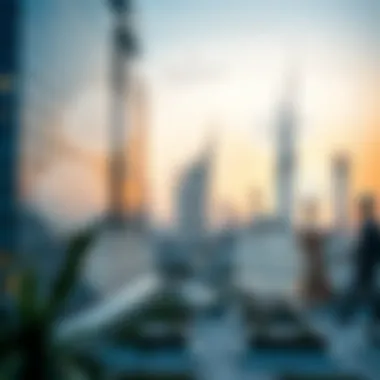

- Initial Outlay: The financial burden of sourcing top-tier shielding materials, be it metals or composites, can be daunting. Many developers may be caught between opting for cost-effective solutions and ensuring long-lasting protection, leading to a trade-off. The financial aspect is not just a one-time cost; ongoing maintenance and potential upgrades during the lifespan of the property can further strain budgets.
- Return on Investment (ROI): Investors are often keen on scrutinizing the ROI. Basic construction sometimes appears more lucrative initially. It becomes essential to emphasize, however, that properties with higher shielding standards may yield better long-term value and greater buyer confidence. The trick lies in recognizing that while immediate expenses may soar, the benefits reaped over time often outweigh these initial concerns.
In the case of commercial developments, where market competition is fierce, the added cost could be perceived as a risk rather than an opportunity.
Regulatory Compliance
Navigating through the myriad of regulations related to industrial shielding can test the patience of even seasoned developers. Governments set rules to ensure that safety standards are upheld; however, these rules can also be cumbersome and at times contradictory.
- Requirement Understanding: Each project could have a different set of compliance standards based on location, property type, and intended use. This variability requires experts who can adeptly interpret these standards, ensuring developers don’t trip over regulatory roadblocks. For instance, some shielding materials may be approved for commercial use but not for residential projects, posing a challenge for mixed-use developments.
- Documentation and Delays: The need for comprehensive documentation to prove compliance can cause further delays. Engaging with regulatory bodies might lead to prolonged approval processes, causing project timelines to stretch beyond initial estimates. Keeping abreast of local and international standards is not just a suggestion but a necessity for anyone in the industry.
In summary, while implementing shielding techniques carries significant benefits, the challenges regarding cost and compliance can't be brushed aside. Stakeholders must account for these factors to strategize effectively and navigate the complexities entailed while reaping the benefits of establishing industrial shielding in their properties.
Investors who understand these challenges are better positioned to optimize their strategies and ensure successful implementations of shielding techniques.
For a deeper dive into relevant regulations, you can check resources such as Dubai's Government Portal and International Energy Agency.
Dealing with the evolving nature of shielding technology also presents opportunities for innovation, pushing the envelope to develop better, more compliant solutions.
Industry Applications of Industrial Shielding
Industrial shielding serves as a critical component in the modern real estate landscape. In Dubai's rapidly evolving market, the application of shielding techniques goes beyond mere aesthetics; we are talking about practical solutions for enhancing safety, sustainability, and efficiency of properties. Understanding how these applications fit into various sectors, such as commercial and residential developments, allows investors and stakeholders to make informed decisions in this competitive arena.
Commercial Real Estate Developments
In commercial real estate, shielding techniques are vital for several reasons.
- Safety during Construction: The construction phase of commercial properties can involve hazardous materials and machinery. Industrial shielding protects workers and the surrounding environment from harmful elements such as radiation or heavy metal exposure. For instance, large-scale projects like the Dubai Mall expansion have implemented shielding measures to ensure compliance with health and safety regulations.
- Operational Efficiency: Once established, commercial spaces such as warehouses and factories benefit from shielding that reduces energy consumption and operational costs. For example, incorporating advanced metal shielding can keep temperatures stable, minimizing heating or cooling expenses in extensive facilities.
- Long-term Durability: The right shielding materials enhance the lifespan of commercial properties. Given the harsh environment of Dubai, where sandstorms and extreme heat are periodic challenges, businesses can protect their assets effectively. This enhances property value over time, making such investments attractive for landlords and developers.
Manufacturers often extract lessons from previous implementations, noting the increasing demands for shielding that is both effective and environmentally friendly. Products used in shielding applications must comply with local standards while being flexible enough for diverse property types, driving innovation in construction practices.
Residential Properties
In the realm of residential real estate, industrial shielding provides homeowners with significant benefits, particularly in terms of safety, comfort, and value.
- Health Considerations: Residential areas are not just about shelter; they are living environments. Adequately shielding homes from electromagnetic interference and other harmful exposures is a growing concern among homeowners. Techniques used include installing non-metal composite materials that offer protection without compromising the home's aesthetic appeal.
- Energy Efficiency: Many residents in Dubai now seek homes that integrate energy-efficient designs. Shielding can play a role here, as homes equipped with proper insulation and shielding techniques consume less energy. This approach aligns with the increasing public awareness of environmental sustainability. Homeowners are likely to see a notable reduction in utility bills, making these properties more desirable in the market.
- Market Appeal and Resale Value: Properties incorporating industrial shielding methods tend to carry higher market values. Buyers are increasingly aware of the long-term benefits associated with homes that feature these techniques. It's not just a selling point; it’s a strategic advantage that can significantly influence resale value.
The integration of industrial shielding in residential developments ultimately leads to enhanced living conditions, helping attract families and professionals to invest in properties that align with their values and lifestyle preferences. As neighborhoods evolve and communities grow, the demand for these innovative applications in homes will likely continue to rise.
"Investors who prioritize industrial shielding in property development are likely to reap the benefits of enhanced property values and satisfied residents."
As Dubai moves forward, the demand for industrial shielding applications in both commercial and residential sectors will shape the future of its real estate market. Understanding these applications, their benefits, and their direct impact can provide significant insights for any stakeholder looking to make wise investment choices.
Impact on Dubai's Real Estate Market
The role of industrial shielding is becoming increasingly paramount in the ever-evolving landscape of Dubai’s real estate market. As developers and investors seek innovative solutions to enhance property value and functionality, the integration of shielding technologies emerges not only as a necessity but also as a competitive advantage. This technology helps address essential concerns related to safety, energy efficiency, and market perception.
Market Trends of Industrial Shielding
In recent years, there has been a noticeable uptick in the adoption of industrial shielding across various property developments. This trend can be attributed to several driving forces. Firstly, with Dubai's ambitious growth trajectory, there is a pressing need for construction that adheres to higher safety standards. Investors are increasingly scrutinizing projects for their resilience against environmental factors such as noise pollution, radiation, and even security threats. Industrial shielding provides a robust framework that mitigates these risks.
Key trends include:
- Sustainability Focus: More properties are integrating shielding materials that not only protect but also enhance energy efficiency. Green building certifications are becoming more desirable, escalating demand for materials that offer both protective qualities and environmentally friendly attributes.
- Tech Integration: The convergence of shielding technologies with smart systems is reshaping property performance. Builders are harnessing sensors and automation systems to monitor the condition of shielding materials and their effectiveness, enabling real-time data adjustments and maintenance solutions.
- Urban Development Initiatives: Government-backed urban initiatives are also pushing for advancements in industrial shielding. Special zones outlined in Dubai’s master plans often emphasize the necessity for modern safeguarding solutions, thus encouraging investors to include shielding in their proposals.
"As the market for industrial shielding continues to grow, the investment in such technologies is likely to pay off in the long run, enhancing property appeal and operational efficiency."
Future Developments and Innovations
Looking toward the future, the prospects of industrial shielding in Dubai's real estate sector are bright. To maintain their competitive edge, developers are expected to embrace cutting-edge innovations. Some anticipated advancements include:
- Smart Materials: The emergence of materials that can respond dynamically to their environment is on the horizon. These materials can adapt to temperature fluctuations, thus enhancing energy management and ensuring comfort for occupants.
- Modular Shielding Systems: The development of modular shielding systems is paving the way for flexible implementations. This adaptability allows builders to customize shielding based on the specific needs of each project, making it easier to match safety requirements and aesthetic considerations.
- Integration of AI and IoT: The future will likely see an uptick in the integration of artificial intelligence and the Internet of Things in shielding applications. These technologies can enhance monitoring and control, leading to more effective and efficient shielding deployments.
As these developments unfold, it is clear that industrial shielding will play a crucial role in shaping not only the realization of safer real estate projects but also the strategic positioning of Dubai as a global hub for innovative architecture and construction practices. Investing in these technologies may very well dictate future success in the market.
Expert Insights and Opinions
In the realm of industrial shielding within Dubai's rapidly evolving real estate market, expert insights and opinions serve as invaluable guiding lights. The significance of harnessing knowledge from seasoned professionals cannot be overstated; it provides depth to the analysis, sheds light on market nuances, and highlights real-world applications of shielding technology. Essentially, these insights crystallize the theories and practices of industrial shielding into actionable strategies that stakeholders can utilize.
Expert commentary adds layers of credibility to this specialization. Investors, developers, and planners rely on these voices to navigate the complexities of shielding implementations. With many market dynamics at play, understanding the viewpoint of industry professionals can help mitigate risks and identify opportunities for strategic investments.
Rather than merely analyzing numbers and trends, industry professionals share their experiences and success stories, allowing stakeholders to learn from both triumphs and challenges. By engaging with their real-world perspectives, stakeholders can better appreciate the potential pitfalls and best practices associated with industrial shielding. This, in turn, fosters a more informed approach to decision-making in a competitive marketplace.
Interviews with Industry Professionals
Interviews with industry professionals offer a front-row seat to the intricate world of industrial shielding. These experts bring years of experience and knowledge accumulated across various projects in Dubai's real estate sector. The insights they provide are not just theoretical but are based on practical, hands-on applications that resonate deeply with the challenges faced by investors and developers today.
Through these discussions, key themes often emerge:
- Emerging Trends: What’s gaining traction in the market? Experts draw attention to trending shielding materials and innovative technologies that promise enhanced performance and sustainability.
- Real-Life Challenges: Professional insight often reveals challenges not always covered in textbooks. For instance, delays in regulatory approvals or unexpected costs during the implementation phase can hinder progress. Understanding these elements from professionals helps in formulating risk management strategies.
- Success Stories: Professionals often recount successful projects, illustrating how specific shielding implementations enhanced property value or improved energy efficiency. These stories serve as templates for future endeavors.
Case Studies of Successful Implementations
Case studies paint a vivid picture of successful implementations of industrial shielding, allowing stakeholders to draw comparisons and lessons learned. Examining actual projects can significantly enhance understanding and showcase the transformative potential of shielding techniques.
- Project A: Retrofit of a Commercial Building
This initiative involved integrating metal composite materials in an existing commercial structure, addressing electromagnetic interference issues. Improved tenant satisfaction was quickly noted, leading to higher occupancy rates and, subsequently, increased revenue. - Project B: New Residential Development
Here, a developer opted for non-metal shielding materials, achieving notable energy efficiency. The use of eco-friendly composites in shielding not only adhered to sustainability standards but also attracted environmentally conscious buyers, boosting the property's market appeal. - Project C: Industrial Facility
An industrial facility utilized advanced shielding technologies to optimize operational safety. The case illustrates how effective shielding not only protects equipment but also creates a safer environment for employees, which in turn enhances productivity.
By highlighting these case studies, stakeholders can gather valuable strategies for their projects. They can witness how innovation, planning, and execution come together to produce successful outcomes in the realm of industrial shielding.
"Learning from the experiences of others is often the shortest path to success."
As we continue to navigate the intricacies of the Dubai real estate market, the lessons learned from industry professionals and successful implementations remain paramount in shaping the future of industrial shielding.
Regulations Surrounding Industrial Shielding
Understanding the regulatory landscape surrounding industrial shielding in Dubai is essential for stakeholders aiming to navigate this niche yet critical aspect of the real estate market. Proper adherence to these regulations not only safeguards investments but also promotes sustainable practices that align with global standards. Companies and investors who fail to familiarize themselves with the rules may face penalties or operational slowdowns, hindering growth opportunities in this competitive sector. In this context, knowing the specific regulations can facilitate smoother project executions and bolster trust with customers and investors alike.
Local and International Standards
Local regulations in Dubai dictate that any form of industrial shielding must conform to the UAE's stringent building codes and safety standards. These standards are in place to ensure the safety and welfare of users, encompassing everything from materials used to the installation procedures. Notably, the Dubai Municipality and the Ministry of Infrastructure Development oversee these regulations, ensuring that the shielding installations comply with both the quality needed for durability and the aesthetic requirements for urban developments.
International standards, such as those outlined by the International Organization for Standardization (ISO), also play a pivotal role. They set benchmarks for quality and safety, and compliance with these standards often aids in attaining international recognition.
Adhering to both local and international standards can lead to:
- Enhanced Property Value: Properties meeting rigorous standards are often perceived as more valuable in the market.
- Operational Efficiency: Compliance can lead to decreased energy costs and improved operational workflows in shielded facilities.
- Increased Marketability: As awareness of sustainable and safe building practices grows, properties that reflect these qualities often enjoy a broader appeal.
Compliance Challenges for Investors
Navigating the web of regulatory compliance can be a daunting task for investors entering Dubai's industrial shielding sector. One significant challenge arises from discrepancies between local regulations and international norms. Investors may find that while certain best practices are recognized globally, local execution could diverge, necessitating adjustments and potentially incurring additional costs.
Moreover, the evolving nature of regulations can catch even seasoned operators off guard. With government bodies continuously updating standards to meet new safety paradigms or sustainability goals, staying informed is paramount. Regular training sessions and consultations with legal experts in Dubai can mitigate risks but also add to operational costs.
Understanding these compliance challenges is crucial for:
- Strategic Planning: Ensuring that investment strategies reflect regulatory realities helps in minimizing unnecessary financial burdens.
- Timing Projects: Delays caused by compliance issues could lead to increased costs; therefore, planning for these can save time and money.
- Protecting Investments: Knowledge of regulations aids in ensuring that investments maintain long-term viability and profitability within the marketplace.
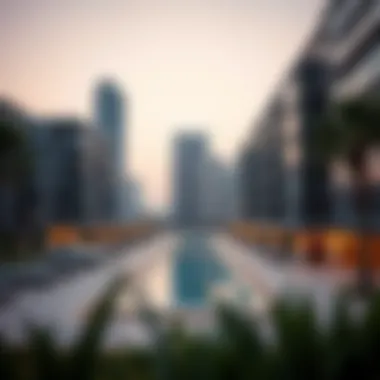
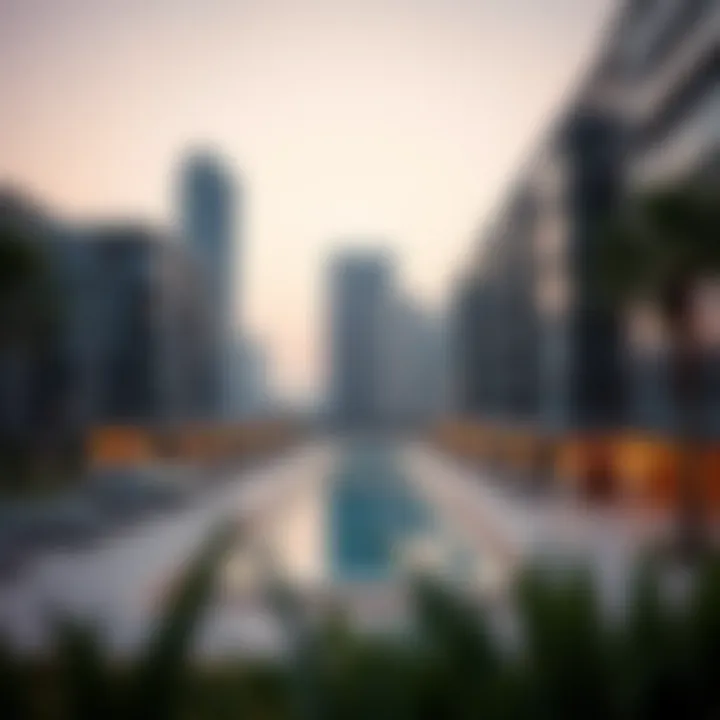
"Investors who take the time to educate themselves on local regulatory requirements tend to reap the benefits of smooth project lifecycles and enhanced market reputation."
In summary, understanding regulations surrounding industrial shielding is not merely a procedural matter. It is crucial for mitigating risk, enhancing property marketability, and ensuring compliance within the fluctuating landscape of Dubai's real estate business.
The Role of Technology in Shielding Applications
In today’s fast-paced world, technology plays a pivotal role in almost every aspect of our lives, and industrial shielding is no exception. The advent of advanced technology has transformed the efficiency and effectiveness of shielding applications in the real estate market, especially in a bustling hub like Dubai. Understanding this role is crucial for stakeholders, including investors, builders, and property managers, as it allows them to leverage these developments for better outcomes.
Advancements in Material Technology
Recent years have brought a wave of innovations in material technology that are fundamentally changing the landscape of industrial shielding. Traditional materials used for shielding, such as lead or steel, are being complemented or even replaced by advanced composites and other materials that offer superior performance.
For instance, materials like carbon nanotubes and graphene are now at the forefront of shielding technology due to their exceptional properties, such as high strength-to-weight ratios and excellent electrical conductivity. These advancements not only enhance the shielding capabilities but also contribute to lightweight designs, making them ideal for new construction projects focusing on energy efficiency.
Moreover, manufacturers are now able to produce shielding materials that are specifically tailored to meet the unique demands of different commercial and residential environments in Dubai. This customization can vastly improve performance and compliance with local regulations.
The incorporation of these innovative materials into building design can lead to increased durability and safety, allowing property owners to attract higher-value tenants and enhance the overall market desirability of their developments.
Integration with Smart Building Technologies
The synergy between industrial shielding and smart building technologies is another cornerstone of modernization in Dubai's real estate sector. As properties incorporate IoT (Internet of Things) technologies, the need for intelligent shielding solutions becomes paramount. These smart systems not only monitor and manage energy consumption but also integrate seamlessly with shielding systems to optimize space utilization and comfort levels.
For instance, buildings equipped with smart technology can automatically adjust shielding materials to manage thermal and acoustic control based on real-time conditions. By integrating sensors that detect changes in temperature and noise levels, developers can enhance the living and working environment for tenants, thus boosting property appeal.
In particular, the application of shielding in smart buildings can dramatically reduce energy costs. For example, automated systems that utilize advanced insulation materials can adapt to varying weather conditions in Dubai, minimizing energy loss and lowering utility bills. This results in significant savings over time and increases property value.
"The combination of advanced shielding materials and smart technologies is redefining living standards and investment returns in Dubai's real estate market."
As property developers and investors adapt to these technological advancements, it is evident that the integration of shielding with smart technologies is not just advantageous but crucial for staying competitive in a vibrant and ever-evolving market. By properly harnessing these insights, stakeholders can ensure that their investments are future-proofed against the shifting tides of technology and market demands.
Comparative Analysis of Global Practices
When examining industrial shielding within the realm of real estate, it becomes critical to analyze global practices. Such comparative analysis provides vital insights into how different regions tackle similar challenges and leverage opportunities presented by industrial shielding. This understanding not only enhances local practices but also opens up avenues for innovation and advancement.
Shielding Practices in European Markets
European markets have long been at the forefront of adopting industrial shielding techniques. Countries like Germany and France have implemented comprehensive guidelines regarding both residential and commercial developments. These practices are often dictated by stringent regulatory frameworks aimed at enhancing safety and energy efficiency.
For instance, Germany emphasizes the use of environment-friendly shielding materials. Developers are increasingly adopting biocomposite materials that boast both functional benefits and sustainability. Property owners see a rise in long-term value as fully compliant buildings resonate with eco-conscious consumers.
Furthermore, European cities like Amsterdam have led the way with smart shielding. The integration of technology allows for dynamic shielding systems that can adapt based on energy needs, thus optimizing performance while reducing cost. This adaptability not only meets housing demands but also ensures that buildings can keep pace with growing energy standards and regulations.
Insights from North American Markets
Shifting across the Atlantic, the North American market presents a distinct yet equally enriching perspective on industrial shielding. The United States and Canada emphasize practical applications, often focusing on the balance between cost-effectiveness and regulatory pressures. In cities like San Francisco, innovative designs utilize metals such as galvanized steel, providing durable and effective shielding against electromagnetic interference in commercial sectors.
Interestingly, North American regulations allow building owners some flexibility regarding materials. This flexibility can spur creativity among architects and contractors, leading to more bespoke shielding solutions. Developments in urban areas often include not only shielding but also aesthetic considerations, which aligns with the local trends in design and urban culture.
"Investors need to look beyond costs; the right shielding can significantly enhance property value over time."
This nuanced approach suggests that while the emphasis is on effectiveness, it is also crucial to incorporate visual appeal and local context within the shielding solutions. For example, in Toronto, as industries evolve, properties in historically vibrant neighborhoods have turned to shielding that blends with architectural styles, adding value not just from an operational perspective but also appealing to prospective homebuyers.
To summarize, a comparative analysis underscores the need for adaptability and innovation. By learning from European and North American practices, investors, developers, and planners in Dubai's real estate market can refine their strategies. Embracing diverse perspectives and effective shielding practices can drive sustainable growth and resilience in the face of future industry challenges.
Consumer Awareness and Education
In the rapidly evolving landscape of Dubai's real estate market, consumer awareness and education have emerged as pivotal factors. Understanding the complexities of industrial shielding isn't just about knowing its existence; it’s about grasping its implications, benefits, and challenges. This knowledge empowers buyers, investors, and even developers to make informed decisions that could significantly affect their investments. In a market where the competition is as fierce as a desert storm, a well-educated stakeholder stands a better chance of reaping benefits from their ventures.
Importance of Educating Buyers
Education plays a crucial role in navigating the nuances of industrial shielding. For buyers, being informed about the various shielding materials, their applications, and efficiency can lead to better purchasing decisions. When potential homeowners or investors recognize the value that industrial shielding can add, it shifts their perspective from viewing it as an added expense to seeing it as a necessary investment. By understanding concepts such as energy efficiency, safety standards, and environmental sustainability, buyers are better equipped to assess property values objectively.
Furthermore, buyers who are aware of the regulations and compliance standards associated with industrial shielding are less likely to encounter unexpected costs down the road. They can engage in proactive discussions with real estate agents and developers, ensuring that all parties stay on the same page. Educational initiatives, like workshops and seminars hosted by industry professionals, can be incredibly beneficial in this regard.
Resources for Further Learning
To foster consumer education effectively, a variety of resources are available that cater to different learning styles and preferences. These can include:
- Online Courses: Websites such as Coursera and Udemy offer courses specifically focused on industrial practices, including shielding.
- Webinars & Workshops: Industry leaders often organize webinars that delve into the technical side of industrial shielding and its applications in real estate.
- Industry Publications: Subscribing to journals like the Building Research & Information or Journal of Safety Research can provide ongoing education on current trends and technologies.
- Government Websites: Regulatory bodies often publish guidelines that can help consumers understand compliance implications, such as those found at *.gov domains specific to Dubai's property regulations.
- Community Forums: Participating in discussions on platforms like Reddit can provide practical insights from others who have navigated similar processes.
Education is not just a tool, it’s a weapon against ignorance, and in the complex market of real estate, it can mean the difference between success and failure.
In summary, by emphasizing consumer awareness and education regarding industrial shielding, stakeholders in Dubai’s real estate market not only enhance their personal knowledge but also contribute to a more informed market environment. This, in turn, fosters confidence, reduces risks, and can enhance the overall quality of investments in the sector.
Economic Considerations of Shielding Implementation
In the sprawling landscape of Dubai's real estate market, economic considerations surrounding industrial shielding play a critical role in shaping investment strategies. As property developers, investors, and stakeholders delve into the complexities of industrial shielding, they must evaluate how such practices not only safeguard assets but also influence financial viability. Understanding these economic implications can spell the difference between successful investments and those that fall flat amidst rising expenditures.
Cost-Benefit Analysis for Investors
Conducting a comprehensive cost-benefit analysis is paramount for investors contemplating the adoption of industrial shielding. This analysis goes beyond mere numbers; it addresses the intricacies involved in weighing initial investments against long-term returns.
- Initial Costs: Investing in high-quality shielding materials often comes with a substantial upfront cost. While this can be a significant barrier for many, it is necessary to realize that such materials are often more durable and effective than cheaper alternatives, potentially saving on maintenance and replacement costs down the line.
- Long-Term Savings: These materials can lead to greater energy efficiency. Enhanced insulation, for instance, can lower utility costs, translating into cost savings that bolster cash flow over time. Moreover, properties with effective shielding often command higher rents, as tenants seek out safer and more reliable environments.
- Insurance Benefits: Many insurance providers recognize the value of industrial shielding, potentially leading to lower premiums for property owners who integrate these technologies. This could represent a hidden gem in the financial matrix of shielding investments.
“A well-executed shielding strategy doesn’t just protect assets; it enhances their value.”
Funding and Investment Opportunities
Exploring funding and investment opportunities related to industrial shielding can provide investors with various pathways to mitigate initial costs while maximizing long-term benefits.
- Government Grants: Investors should look into potential grants from the local government aimed at promoting safety and energy efficiency. These funds often seek to subsidize shielding technologies for developers willing to align their projects with sustainability goals.
- Private Investments: Partnering with private equity firms or venture capitalists focused on innovative technologies in the real estate sector may yield fruitful results. These investors are increasingly keen on funding projects with a proven ability to enhance value and reduce risk.
- Crowdfunding Platforms: The rise of real estate crowdfunding platforms provides smaller investors with access to funding opportunities that were previously only available to larger players in the market. By pooling resources, multiple investors can support projects that incorporate industrial shielding, thereby distributing risk.
Investors may also consider reinvesting returns from existing assets into properties that utilize industrial shielding, creating a virtuous cycle of investment and growth.
In summary, the economic considerations of shielding implementation require a detailed exploration of costs versus benefits, alongside a proactive approach to securing funding. Investors who delve into these aspects are better positioned to make strategic decisions that take full advantage of the growing demand for enhanced property protection in Dubai's real estate arena.
Future Outlook for Industrial Shielding
The prospects for industrial shielding in Dubai's real estate market are shaping up to be transformative, with numerous factors influencing its direction. As the region continues to develop, the adoption of advanced shielding technologies is expected to grow, promising enhanced safety, energy efficiency, and property value appreciation. The forward trajectory of this field holds immense significance as investors, developers, and homeowners begin to recognize the long-term rewards anchored in strategic shielding implementations.
Several elements drive the importance of focusing on the future outlook of industrial shielding:
- Adapting to Market Demands: The increasing insistence on safety and sustainability among consumers is boosting the mandate for effective industrial shielding solutions in property developments.
- Regulatory Changes: New regulations often push developers to incorporate shielding measures, thus establishing a standard that aligns with global best practices while ensuring the safety of occupants.
- Technological Advancements: Emerging technologies continue to evolve the range of materials and methods for shielding applications, fostering innovation that impacts market offerings.
These trends outline a compelling narrative forecasting a vibrant future for industrial shielding, centered on both growth and innovation.
Predictions and Projections for the Market
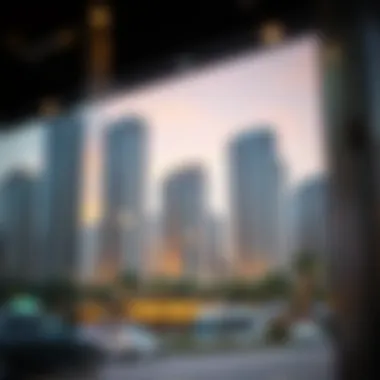
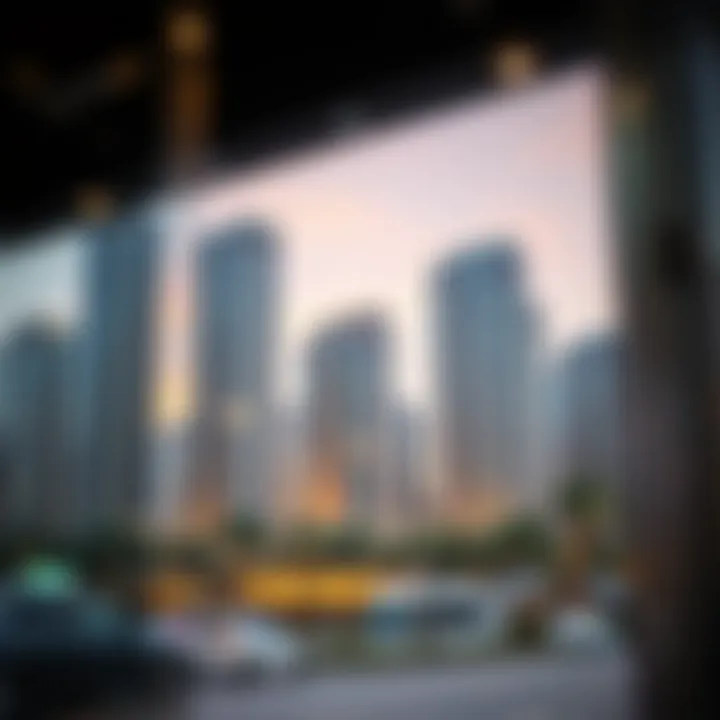
As we sift through the market landscape, it's apparent that the predictions surrounding industrial shielding vary but consistently point to growth. Analysts predict a surge in demand over the next few years as stakeholders become increasingly aware of how shielding affects property investment returns. Several factors underpin these predictions:
- Investment Toward Infrastructure: Expect significant investments in infrastructure, driven by urbanization initiatives aimed at amplifying Dubai's global standing as a premier real estate hub.
- Increased Property Values: Properties equipped with advanced shielding solutions are anticipated to witness superior value appreciation as they meet growing consumer expectations.
- Focus on Environmental Sustainability: The shift toward eco-friendliness is compelling developers to adopt shielding measures that not only cut energy costs but also bolster the sustainability credentials of their properties.
Lulled into a pattern of constant evolution, futuristic market possibilities remain a source of motivation and caution among investors. By embracing these forecasts and adapting strategies accordingly, stakeholders can position themselves advantageously in a dynamic environment.
Potential Innovations on the Horizon
The innovations that loom on the horizon for industrial shielding present tantalizing possibilities for the entire real estate sector in Dubai. With a keen focus on research and development, leading firms are exploring multiple avenues to enhance shielding applications:
- Smart Materials: The realization of materials that react to environmental changes is on the brink. Imagine a shielding material that adjusts its insulating properties based on external temperature—this is not just a daydream but a pressing frontier in material science.
- Nanotechnology Applications: Employing nanotechnology, shielding materials could become lighter yet offer better protection—all while conserving more energy than ever.
- Integration with IoT: The synergy of industrial shielding with Internet of Things (IoT) technology could lead to smarter energy management systems, transforming how buildings engage with their energy needs.
- Biodegradable Shielding Options: As the world turns towards sustainability, the development of biodegradable shielding materials may gain traction, providing an eco-friendly alternative without compromising safety.
Connecting Industrial Shielding with Property Values
In the rapidly evolving landscape of real estate in Dubai, industrial shielding has emerged as a key consideration that directly influences property values. This section aims to unpack the intricacies of how industrial shielding materials and techniques not only protect assets but also enhance their market appeal. With investment in property being a significant commitment, understanding the impact of shielding can guide stakeholders in making informed decisions. Incorporating shielding measures is not just about compliance or safety; it's also a strategic move to boost property accessibility, desirability, and potential return on investment.
Influence on Property Market Trends
The introduction of industrial shielding has shown to significantly sway trends in the Dubai property market. Investors are becoming more discerning, increasingly looking for properties that uphold robust safety and quality standards. The advancements in industrial shielding have translated into tangible market advantages. Properties equipped with superior shielding tend to attract more interest, often leading to a quicker turnover in sales.
- Enhanced Safety Perception: Properties that demonstrate a commitment to safety resonate well with buyers. A shielded building not only protects against physical threats but also fosters a sense of security, inherently raising its market value.
- Energy Efficiency: Many shielding materials are designed to improve insulation and energy efficiency. Buildings that offer lower operational costs often appeal more to potential buyers or tenants, resulting in premium pricing.
- Sustainability Appeal: With growing awareness around environmental issues, properties that incorporate shielding for energy conservation and environmental protection can stand out in a crowded market. This eco-friendly angle often translates to a higher value proposition.
By integrating these aspects, industrial shielding does not only serve functional purposes but also aligns with modern buyer preferences, effectively driving market trends upward.
Assessing Value Appreciation in Shielded Properties
When examining investment in shielded properties, stakeholders must consider value appreciation as a crucial metric. Here's how industrial shielding positively affects the perception and the financial appraisal of a property:
- Increased Market Resilience: Properties fortified with shielding tend to withstand market fluctuations better than their unshielded counterparts. This resilience leads to a more stable appreciation trajectory over time.
- Higher Rents and Residual Income: Landlords can command higher rents for shielded properties, thanks to enhanced amenities and perceived safety. The ability to secure consistent, elevated rental income contributes favorably to overall property appreciation.
- Long-term Investment Security: Buyers are often willing to pay a premium for properties that exhibit long-term stability influences, such as shielding. With protection against regulatory changes, technology obsolescence, or market trends, investing in shielded properties becomes a strategic safeguard.
Ultimately, diversifying investments into shielded properties not only enhances immediate value but positions investors advantageously for future growth.
"The value of a property is not just what it stands on, but the safeguards it carries with it. Investing in industrial shielding is investing in the future of real estate."
By understanding these dynamics, all stakeholders—investors, developers, and homeowners—can better navigate their strategies in the vibrant and sometimes volatile Dubai real estate market.
Strategies for Effective Implementation
Implementing effective industrial shielding techniques in the Dubai real estate market is no trivial task. It requires a careful blend of materials, human expertise, and strategic planning. This section will outline the key strategies for ensuring that these shielding measures not only fulfill their intended purpose but also enhance the overall property value and marketability.
Choosing the Right Shielding Material
Selecting the appropriate shielding material is the first step toward successful implementation. The choice largely depends on the specific needs of the property as well as the nature of the industrial activity taking place. Some commonly considered materials include:
- Lead: Often used for its high density and effective radiation shielding properties. However, its weight and cost can be significant downsides.
- Steel: Widely favored for its durability and strength, steel can withstand physical impacts while providing decent electromagnetic shielding.
- Concrete: An economical choice, concrete allows for excellent thermal insulation and is often used in larger constructions.
When deciding on a material, it is also crucial to consider the local climate. For instance, materials like insulated metal panels may offer better energy efficiency in the hot Dubai climate. Additionally, sustainability should play a role in decision-making. Materials that have lower environmental impact or are sourced locally will appeal to a growing demographic of eco-conscious investors.
Incorporating advanced technologies, such as nanomaterials, which can provide superior shielding properties at thinner dimensions, is becoming increasingly prevalent. Therefore, continuous research and consultation with experts in the field are necessary to stay ahead of the curve.
Working with Professionals and Contractors
Engaging professionals and contractors with specialized knowledge in industrial shielding is pivotal in ensuring successful implementation. These experts not only bring valuable insights into effective practices but also understand compliance regulations that may differ across the region.
When selecting a contractor, consider the following factors:
- Experience with Similar Projects: Look for individuals or firms that have a track record of executing similar shielding projects successfully.
- Regulatory Knowledge: Familiarity with both local and international shielding standards can save time and frustration during the implementation phase.
- Technology Integration: The ability to seamlessly incorporate technology-driven solutions, such as smart shielding systems, is increasingly becoming a deciding factor for stakeholders.
Effective communication is essential. Keep the conversation open and detailed to ensure that everyone is aligned with the objectives, timelines, and budget constraints. A cohesive team not only reduces risks but can also enhance the overall outcome of the project.
"The right material and expertise combined can create a shielding solution that is both effective and cost-efficient, leading to higher property values and buyer satisfaction."
By making informed choices regarding materials and involving skilled professionals in the process, stakeholders can significantly enhance the efficacy of industrial shielding within their developments.
Investment Considerations for Stakeholders
In the evolving landscape of Dubai's real estate market, industrial shielding emerges as a pivotal factor for stakeholders, encompassing investors, developers, and agents. Understanding the nuances of industrial shielding isn't just pointing out its technicalities—it's crucial for navigating the investment terrain effectively. With investments tied to safety, compliance, and market adaptability, stakeholders must evaluate critical aspects that can influence their decisions and future prosperity.
Evaluating Risk Factors
When it comes to investing in shielded properties, the risk factors cannot be overlooked. These risks vary from the technical to regulatory, each demanding thorough analysis. For instance, evaluating the material longevity is essential; investors should consider whether the shielding materials will withstand environmental stresses in Dubai's climate. The choice of materials goes beyond cost—it directly impacts property durability.
Additionally, complying with local regulations can pose another challenge. Stakeholders must stay updated on policies regarding industrial shielding. Non-compliance can lead to legal repercussions, potentially costing investments dearly.
- Technical Risks: Assure that shielding techniques meet safety and efficiency standards to avoid future liabilities.
- Market Risks: Consider market volatility, specifically how demand for shielded properties may fluctuate.
- Regulatory Risks: Ensure all actions meet local laws, reducing the chance of penalties or project delays.
"Risk is like a shadow; you can’t avoid it but learning how to embrace and manage it can illuminate your path to secure and sustaintable investments."
Long-term Benefits of Shielded Investments
Investing in properties with superior shielding presents numerous long-term advantages, which can significantly outweigh the initial costs. First and foremost, enhanced safety and security not only protects occupants but also can lead to lower insurance premiums. Investors often find that properties equipped with industrial shielding tend to have higher market values, thanks to the added layer of protection.
- Market Appreciation: Shielded properties often experience a steady appreciation rate, given their desirability in high-risk areas.
- Reduced Operating Costs: Over time, the efficiency benefits of industrial shielding can lead to significant savings in energy bills. Properties designed with this in mind tend to consume less energy, promoting sustainability as well.
- Attracting Quality Tenants: Businesses seeking secure environments are likely to choose properties with shielding features, ensuring lower vacancy rates and stable rental incomes.
In sum, while investments in shielded properties come with their share of risks, the long-term benefits can evolve into substantial rewards. As the Dubai real estate market continues to innovate, savvy stakeholders will align their investment strategies with these emerging trends, leveraging industrial shielding to not only safeguard their ventures but to enhance their overall value in an increasingly competitive marketplace.
Concluding Thoughts on Industrial Shielding
Industrial shielding is more than just a buzzword in the realm of Dubai's real estate market. It stands at the intersection of innovation and necessity, reflecting the ever-evolving demands of property investors, developers, and residents alike. The increasing focus on security, energy efficiency, and environmental sustainability has made industrial shielding a key component in modern architecture.
Often, investors and stakeholders might view shielding as an added expense rather than a valuable investment. However, this perspective overlooks the numerous benefits that come with implementing proper shielding techniques. When done right, shielding can lead to significant long-term cost savings by enhancing energy efficiency, improving safety, and boosting property values.
Engagement in this specialized area has far-reaching consequences; for example, properties that effectively utilize shielding can command higher rental and resale prices. It's crucial for stakeholders to recognize that industrial shielding not only improves physical structures but also positively influences the broader market trends in Dubai.
Investment in shielding technology is not merely about compliance; it transforms the fundamental value proposition of a property.
Summary of Key Insights
As we gather our thoughts on industrial shielding, several key insights emerge:
- Enhanced Property Value: Properties equipped with advanced shielding techniques tend to appreciate in value more rapidly, presenting an attractive opportunity for investors.
- Safety Measures: Shielding protects against various threats, including electromagnetic interference and physical intrusions, making spaces safer for occupants.
- Energy Efficiency: With rising energy costs, shielding solutions can greatly reduce energy consumption, contributing to sustainability goals and lowering utility bills.
- Market Trend Influence: The demand for shielded properties is growing, guiding developers to integrate these measures early in their projects to meet future market expectations.
These insights are crucial for guiding decisions across all levels of the real estate market, helping stakeholders understand the pivotal role shielding now plays.
Reflection on Future Developments
Looking ahead, the landscape for industrial shielding in Dubai is rife with potential developments. Emerging technologies are set to redefine the parameters of what is possible in shielding, particularly in the following areas:
- Smart Shielding Technology: The integration of artificial intelligence and IoT (Internet of Things) is likely to enhance how we apply shielding, providing real-time monitoring and control features that can optimize performance.
- Innovative Materials: Advances in material science may lead to the development of lighter, more effective shielding materials, further increasing feasibility and application in diverse property types.
- Regulatory Impacts: As environmental and safety standards tighten globally, shielding practices are expected to evolve quickly, making compliance not just a legal requirement but a competitive advantage.
In summary, the developments on the horizon signify more than just incremental changes; they represent a paradigm shift in how we think about shielding in real estate. As Dubai continues to grow as a global emirate, the real estate market will likely lean into these changes, making industrial shielding a fundamental aspect of property development.
For those interested in diving deeper into the world of industrial shielding, resources such as the US Department of Energy and ResearchGate can provide further insights and empirical data that substantiates these trends.


